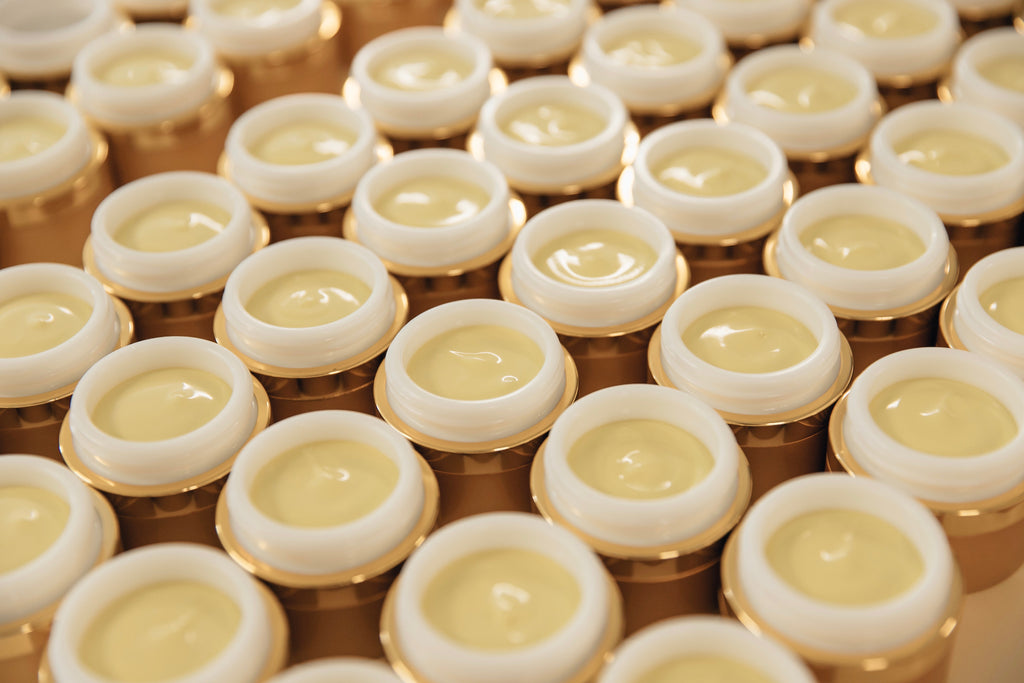Propolis
Honeybees provide many benefits to the plants and animals surrounding their hives. The best known of these, of course, are honey and pollination of plants.
But honey and pollination are not the only gifts offered by these ancient, magical insects. Propolis is yet another beehive product that provides many unique benefits.
But honey and pollination are not the only gifts offered by these ancient, magical insects. Propolis is yet another beehive product that provides many unique benefits.

What is Propolis?
Propolis is a sticky resin that seeps from the wounds and buds of trees. When collecting propolis, bees prefer resins from poplar and conifer trees. After collecting the propolis, sometimes called "bee glue," bees carry it back to the hive in their pollen baskets. Once back at the hive they are met by other worker bees who help them unload it. These workers then mix the propolis with salivary secretions and flakes of beeswax.
The final blend of bee propolis is usually a reddish-brown, amber-like substance that is very sticky in hot weather and very brittle in cold weather. It is made up of approximately 55 percent resin, about 30 percent beeswax, 10 percent oils, and 5 percent pollen. It is rich in a variety vitamins, minerals, and amino acids.
When analyzed down to its trace ingredients, bee propolis contains more than 300 compounds, the exact makeup of which varies greatly depending on the plant source, the time of collection, and the geographic location of the hive.
When analyzed down to its trace ingredients, bee propolis contains more than 300 compounds, the exact makeup of which varies greatly depending on the plant source, the time of collection, and the geographic location of the hive.
How Bees Use Propolis
Propolis is used by bees in several ways. First, it is used as a sort of caulking to fill in holes and cracks in the hive to protect against draughts.
Second, propolis, with its strong anti-bacterial qualities, is used to disinfect the interior of the hive. The entire interior of the beehive is coated with propolis, and the interior of the brood cells is also coated in preparation for the laying of eggs. This disinfecting of the cells ensures an antiseptic environment for the rearing of the brood.
Second, propolis, with its strong anti-bacterial qualities, is used to disinfect the interior of the hive. The entire interior of the beehive is coated with propolis, and the interior of the brood cells is also coated in preparation for the laying of eggs. This disinfecting of the cells ensures an antiseptic environment for the rearing of the brood.
Bees also use the antiseptic qualities of propolis in other ways. For example, if a mouse gets into the hive and is killed by the bees, the mouse would normally decay, causing serious bacterial problems. However, the bees "mummify" the mouse entirely with propolis. The mouse then remains embalmed and the bees are totally protected from harmful bacteria and decay.

How People Use Propolis
The word propolis is said to have been coined by Aristotle, from the Greek words "pro" (defend) and "polis" (city). This term "Defender of the City" is appropriate because bees use propolis to seal their hives, narrow the entrances to protect against intruders, and sterilize the inside of the hive.
Propolis has long been used by humans for medicinal purposes. The ancient Greek physician, Hippocrates, often called the "father of modern medicine," prescribed propolis for the healing of sores and ulcers. Egyptians used propolis for a variety of diseases and to embalm bodies. The Roman scholar Pliny wrote extensively on propolis, describing its abilities to reduce swelling, soothe pain and heal sores.
Propolis has long been used by humans for medicinal purposes. The ancient Greek physician, Hippocrates, often called the "father of modern medicine," prescribed propolis for the healing of sores and ulcers. Egyptians used propolis for a variety of diseases and to embalm bodies. The Roman scholar Pliny wrote extensively on propolis, describing its abilities to reduce swelling, soothe pain and heal sores.
Today, as Dr. Andrew Weil explains, propolis is used in the manufacture of chewing gum, cosmetics, creams, lozenges and ointments and is being investigated as a dental sealant and tooth enamel hardener. He further explains that a number of preliminary studies have tested its effectiveness in humans and animals as a treatment for burns, wounds, infections, and dental pain. The results of these studies have been positive, but not yet extensive enough to be conclusive.
The use of propolis in toothpaste helps fight bacteria and tooth decay and helps heal bleeding gums.
The use of propolis in toothpaste helps fight bacteria and tooth decay and helps heal bleeding gums.
Learn more about propolis in this scientific research abstract.
At Honey Girl Organics we use propolis in almost all of our products

The combination of intense nutritional content and strong anti-bacterial qualities make it a sure thing for natural skin care.
